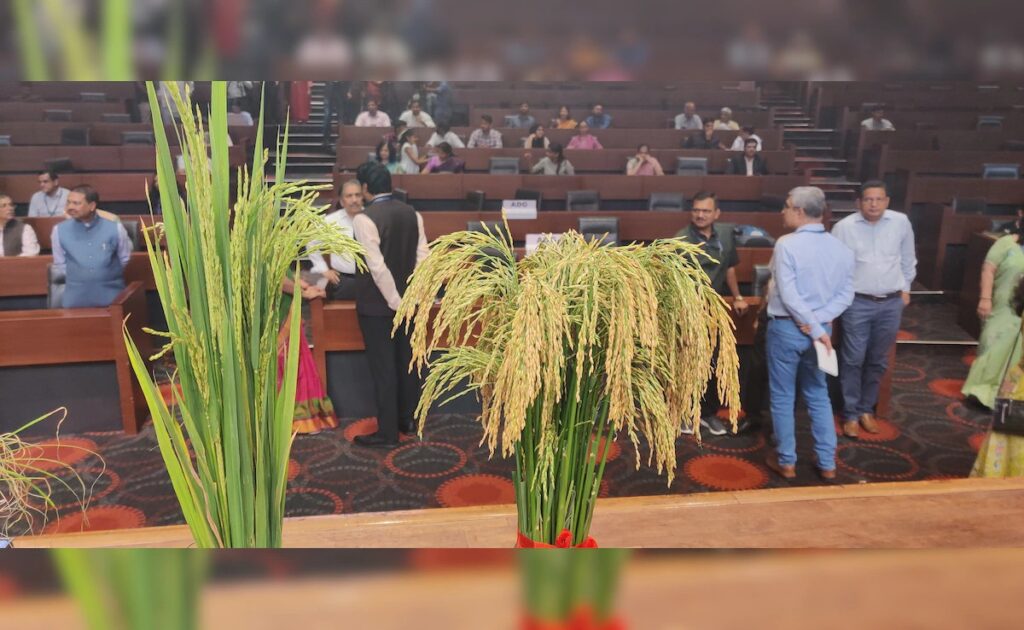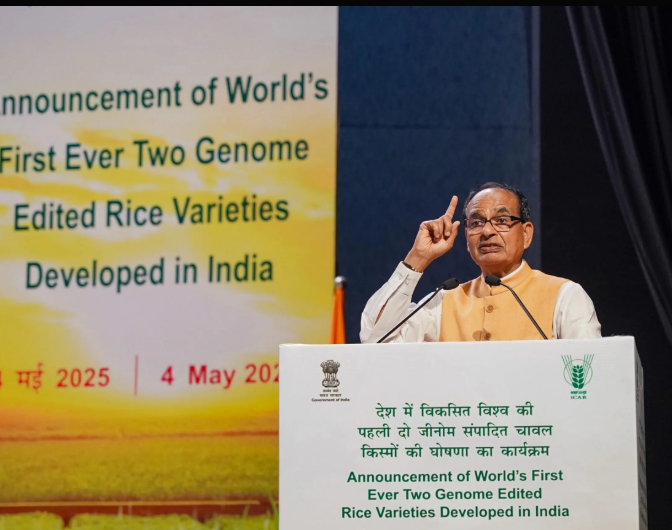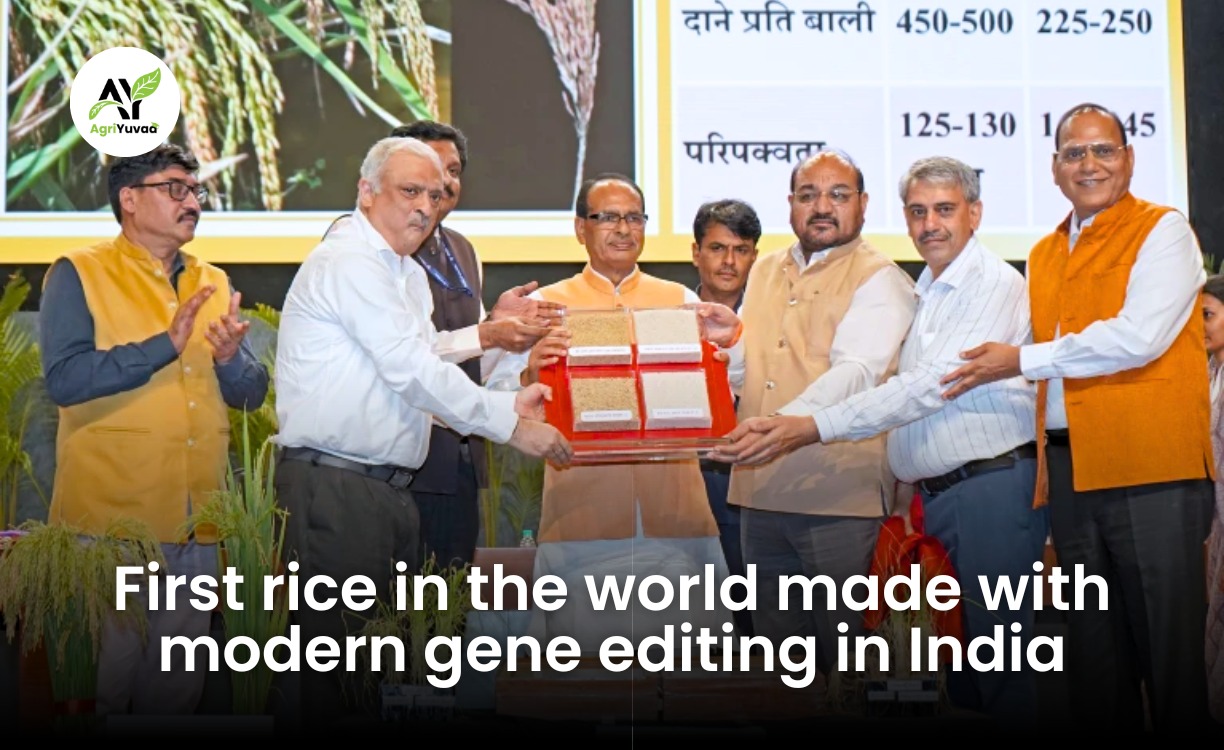India has now made global headlines by becoming the first country to develop genome-edited rice varieties using 21st-century technology. On May 5, 2025, Agriculture Minister Shivraj Singh Chouhan launched these revolutionary rice varieties, created by leading scientists at Indian Council of Agricultural Research (ICAR) institutions.
Even under difficult circumstances like poor soil and severe weather, these new cultivars are meant to assist farmers in producing more food with less work. As India progresses toward Viksit Bharat (a developed India), their capacity to tolerate such stressors makes them climate-resilient, which is essential to maintaining steady agricultural output. They will help the expanding population by increasing resilience and food security.
New Rice Varieties:

- DRR Dhan 100 (Kamala)
- Derived from: Samba Mahsuri (a popular Indian rice)
- Key features:
- Matures 15–20 days earlier than regular varieties
- Yields 25% more grain
- Less risk of disease due to shorter growing period
This variety lets farmers harvest earlier and possibly grow an extra crop in a year, increasing their income and efficiency.
- Pusa DST Rice 1
- Key feature: Tolerant to salinity and alkalinity
- Yields 30% more under saline soil conditions
- Perfect for regions where salt-affected soils limit rice production
This variety gives hope to farmers in coastal and inland saline-prone areas, where normal rice struggles to grow.
Who developed these varieties?

These rice varieties were developed by leading researchers at ICAR institutes, which work under the Government of India to improve farming through science and technology.
The varieties have been tested and recommended to farmers in states such as Andhra Pradesh, Bihar, Karnataka, Telangana, Tamil Nadu, Uttar Pradesh, Chhattisgarh, Maharashtra, Madhya Pradesh, and West Bengal.
Why are these varieties important?
- More food: Cultivating them on 5 million hectares can produce an extra 4.5 million tons of paddy.
- Lower costs: Faster growth and higher yields reduce farming expenses.
- Climate resilience: They can handle stressful soils and changing weather.
- Better nutrition: Higher yields mean more rice to feed people.
According to ICAR, these genome-edited varieties will drive the Second Green Revolution in India, making farming smarter and more sustainable.
Conclusion
With DRR Dhan 100 Kamala and Pusa DST Rice 1, India is showing the world how modern science can solve age-old farming challenges. These new rice varieties will help farmers, consumers, and the nation grow stronger together.
AgriYuvaa: Your Career Partner in Agriculture
✅ Government agriculture job updates
✅ Internship and training opportunities
✅ Webinars, workshops, and career counselling
✅ Latest innovations and trends in Indian agriculture
🔔 Join our Whatsapp Channel group:
Stay updated with AgriYuvaa, your trusted platform for agriculture job alerts, internships, and career advice.








